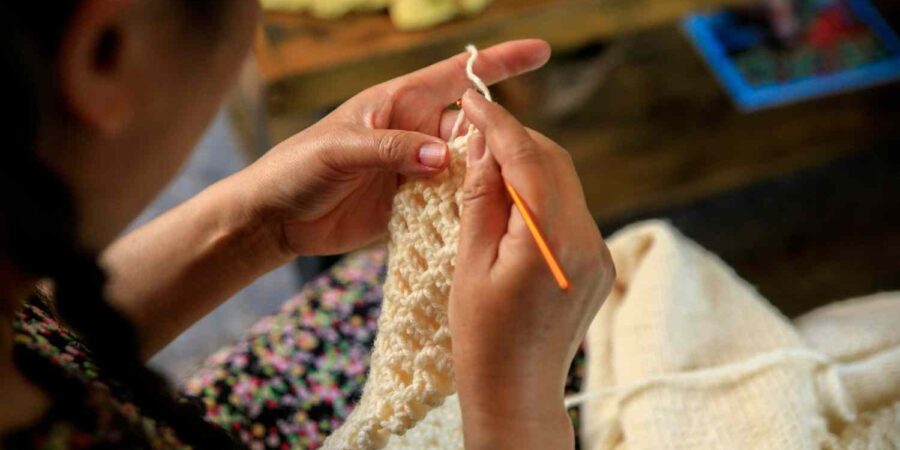The word “crochet” comes from Old French, meaning hook and refers to the technique of making fabric from yarn strands, using a hook. Crochet may have originated from fabric-making traditions in the Middle East, China or South America but arrived in Europe around the 19th century. Crochet lace was a fashion staple in the Victorian era, its popularity continuing up to the 1960s. In recent times, crochet has enjoyed a comeback on the international fashion scene.
Crochet is a versatile craft, once you have mastered basic crochet stitches, you can create lace embellishments for garments or items like coasters, afghans and even tablecloths.
Basic crochet stitches
Chain stitch: An introduction to crochet typically begins with learning to make chain stitches. This most basic of crochet stitches is used at the start of a crochet project; hence, a row of chain stitches are also referred to as a “foundation chain”.
Slip stitch: This stitch comes in handy when you link two crochet elements together.
Single crochet stitch: A short stitch that’s frequently used in several crochet patterns.
Double crochet stitch: Another basic stitch for beginners. It’s tall, with a distinct texture and there are infinite ways in which it can be used.
Treble/Triple crochet stitch: A little more difficult to master, the treble stitch is lengthier than the double crochet stitch.
Getting started
With a crochet hook, skeins of yarn and scissors, you’re good to go! Here are a few handy tips:
Before wielding your hook, wind the yarn into a ball. This helps you avoid any tangles. Also, you will be able to achieve even tension while crocheting.
Remove any jewellery on your hands that could snag on the yarn.
Keep several sizes of hooks handy. If your stitches tend to be too tight, a common problem with beginners, you may want to switch to a larger hook; if they’re too loose, a smaller sized hook will help. Experiment with hooks before starting so that your crochet stitches remain consistent.
Mistakes can and do happen, especially if you’re inexperienced. If you notice an error you’ve made in an earlier row, don’t lose heart. Just open out the stitches up to where the mistake occurred and start over.
Start your first few projects with 4-ply, medium weight yarn. Go for good quality yarn as this helps you form stitches easily. Identify a simple project like a dishcloth, granny square or even a bookmark that will give you practice with basic crochet stitches.
Even the simplest of crochet stitches may seem daunting to the uninitiated, but a little patience and perseverance will soon have you crocheting like a pro. Be warned, crochet can be addictive, too!


Leave a Reply